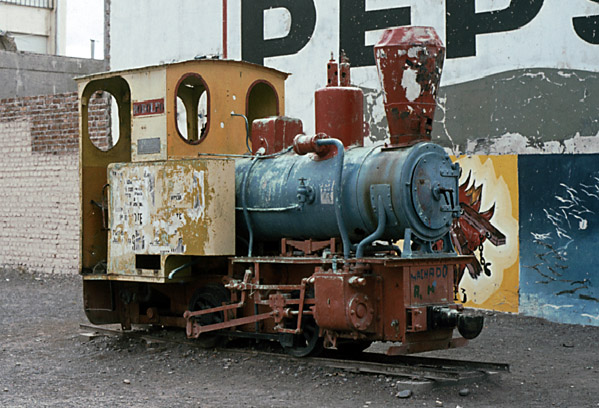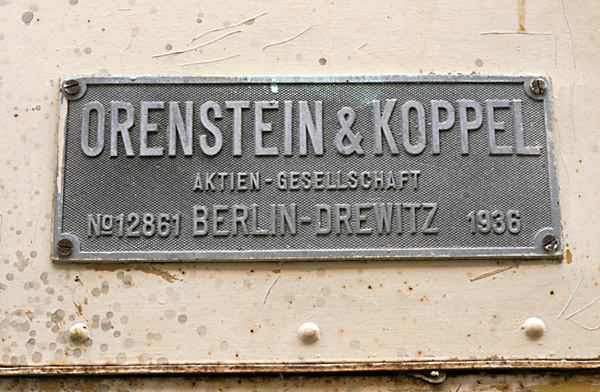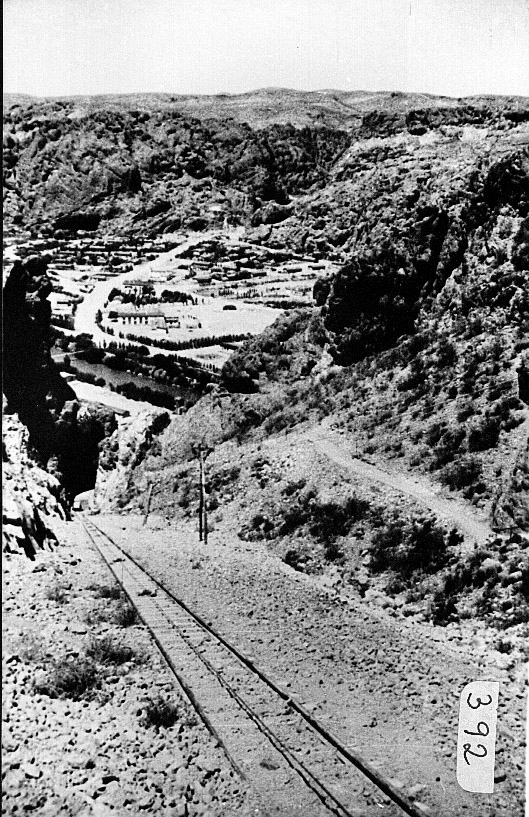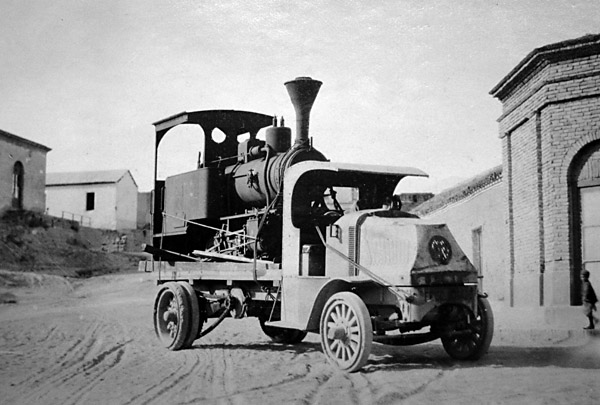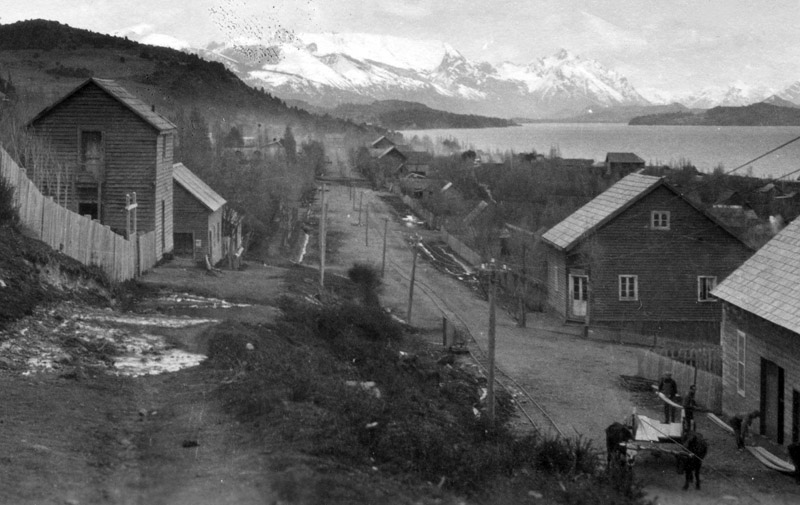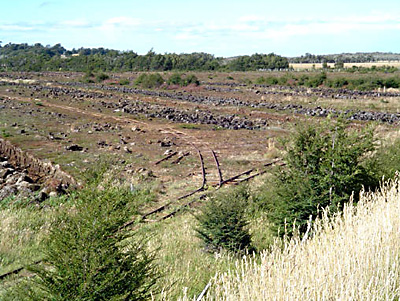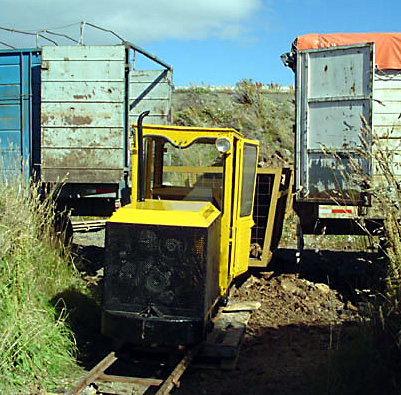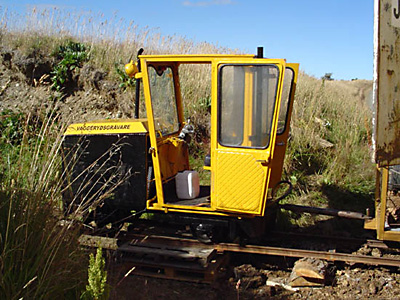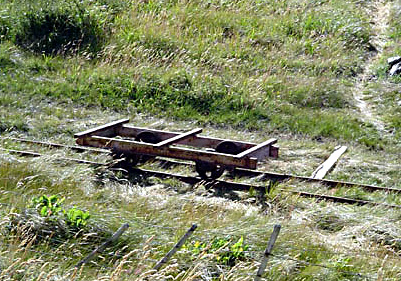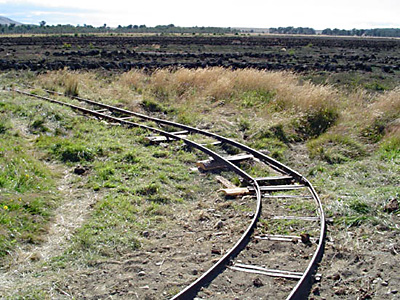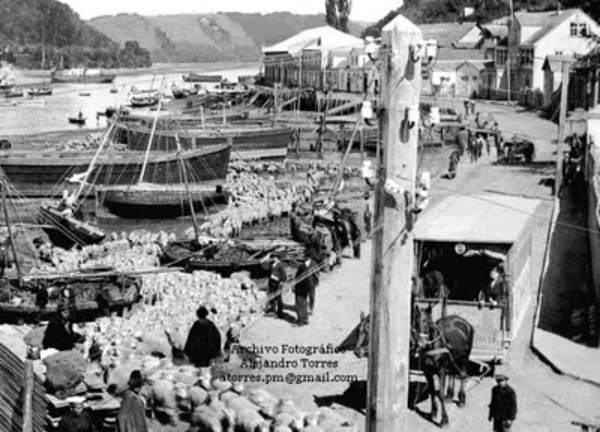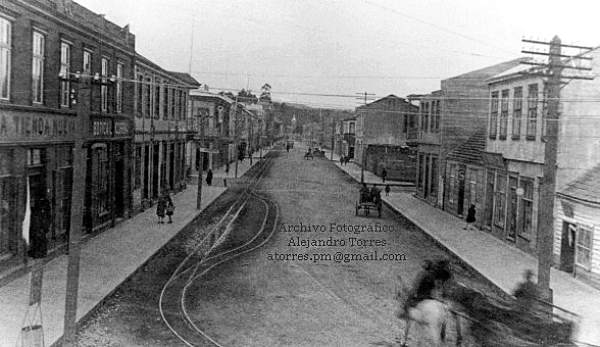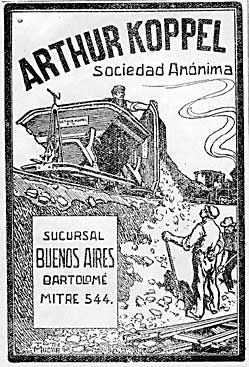 |
|||||||||||||||
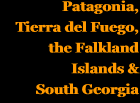 |
|||||||||||||||
 |
|||||||||||||||
 |
|||||||||||||||
Oddments of all kinds Grun & Bilfinger SA, contractors At the back of the Museo Regional in Trelew is an Orenstein & Koppel 0-4-0T, No. 12861 of 1936, as shown left. Gauge is 60cm. It carries a conical spark-arresting chimney and the name 'Rodolfo.' It, with its twin no. 12860, were owned by the Grun & Bilfinger construction company's Argentinean subsidiary. They were used for some time at a dam site in Neuquen province before arriving (in 1948?) at the Florentino Ameghino Dam construction works further up the Chubut valley. As well as these two steam locos the Ameghino Dam works used an O. & K. diesel, no. 21016 of 1937, class RL3 (1). The photo was taken in 1975 when its livery was appropriate to its then location in a playground. Nowadays its colour scheme is a combination of black and rust.
The Orenstein & Koppel worksplate is shown below.
The photo below shows a rope-worked incline in use during the construction of the Florentino Ameghino dam (6). The temporary 75cm gauge branch from the FCCC mainline approached across the top of the plateau, behind the photographer. The dam itself was behind the spur of rock to the right. Much of the construction work was based down in the valley and the incline was therefore constructed to lower materials down to the base level. It is surmised that the incline was of 60cm gauge and linked to Messrs Grun & Bilfinger's operations, but this photo does not provide proof of this, as it might be of 75cm gauge.
Contractors' narrow gauge systems utilised during the construction of the permanent railways. An Orenstein & Koppel tank loco is carried through the streets of San Antonio Oeste during the broad gauge construction works there (7). The lorry is almost as interesting, and is an early Mack
'Duncan Fox, Patagonia' Bariloche
Peat workings on Staten Island (Isla de los Estados) A new peat bog railway The first picture shows a line running along the edge of the working bog, with a branch leading off into the middle of the workings. The track is of 60cm gauge, in panels imported from Sweden.
There seems to be one loco, a small four-wheeled diesel. This is by Vaggarydsgraväre AB of Vaggaryd in Sweden, and is their builder's number 7 constructed in 1985. To quote Eljas Polho of Finland, "The original owner of VG 7 was Sundholm Skog och Torv AB, Järsnäs, Sweden (A peat operation). The VG-locomotive was sold to Chile in April 1996, with 3 wagons, 1km of rails and some other peat machinery."
Another view of the Swedish diesel.
A wagon chassis out on the moss. Eljas Polho also gave the information that "Hörle Torv (another peat bog in Sweden) sold 10 wagons and 2km of rails to Chile." but whether this equipment also came to Rio Rubens is not known.
A final picture shows the line curving out towards the bog.
The Puerto Montt Horse Tramway It wasn't until 10 January 1921, and the introduction of a horse tramway, that Puerto Montt had any form of public transport. A Juan de Dios Donoso formed a company Empresa de Carros Urbanos to run a horse tram system. It had a single route starting in calle Copiapó heading for the shore before turning sharply right into calle Antonio Varas which runs west north west a short distance back from the shoreline, and in those days was the principal business street. Eventually it reached avenida Angelmó which in those days, now it separated from the water by harbour installations, ran along the edge of beach to finish a short way along it. This photo shows a two horse single deck tram; the single deck is emphasised as many early, horse or electric trams in Chile were double deck. The location is avenida Angelmó at its junction with calle Miraflores. The tram appears to be a slab-sided vehicle. Interesting it appears to have an electric headlamp located underneath the canopy.
Service The system operated on a twenty minute headway with a flat fare of 20 cents first class and 10 cents second class. It perhaps should be explained that the use of two classes in trams in Chile was the norm. While the standard of comfort may not have been very different, it did have the advantage of segregating the higher orders from the riff-raff.
Quotes from the rules indicated that smoking was not allowed in first class. It was allowed in second class except when the trams headlight was lit; perhaps this is a reflection of the lack of strength of the headlight. The windows were not allowed to be closed when it was raining and there was a strong wind.
The service apparently continued for a number of years, though it seemed to have suffered interruptions caused by mud slides and heavy rain, which converted the streets into quagmires.
The vehicles seem to have been very small as the capacity was quoted as ten seated and five standing.
This view is taken in calle Antonio Varas. The track, but no tram, is clearly visible laid to one side of a wide street. There is not a great deal of traffic visible, though here does appear to be a motor car parked in the distance to the right. There is a passing loop and the track is seen sweeping round in a curve in the foreground suggesting that this might be the corner with calle Copiapó.
References http://ceph-puerto-montt.blogspot.co.uk/2010/01/album-del-recuerdo-imagenes-de-nuestra_24.html (entered 17/11/12)
An Arthur Koppel advert from an issue of The Review of the River Plate in 1906. 30-1-2018 |
|||||||||||||||
Chapter 13
A variety of industrial railways


